An estimated 450 to 1000 billion small wild vertebrate fish are slaughtered each year for fishmeal and fish oil. In January 2017, I compiled some information on the use of fish oil in aquaculture to share with some EAs working in animal advocacy. This post is a lightly edited version of that.
I'm focusing on fish oil rather than fishmeal mostly because I've spent more time reading about fish oil.
The omega-3 fatty acids from fish (EPA and DHA) originate from phytoplankton (plant-like organisms) rather than fish themselves.
NOAA says: "Fish oil is a major natural source of the healthy omega-3 fatty acids eicosapentaenoic acid (EPA) and docosahexaenoic acid (DHA). These fatty acids are not made by the fish, but become concentrated in fish further up the food chain from the marine phytoplankton (microscopic marine algae and microbes) that do synthesize them."
The understanding I have is that nearly all the EPA and DHA available in farmed fish originate from fish oil, mostly derived from small wild vertebrate fish like anchovies in Peru, who get this EPA and DHA by eating plankton. So, an obstacle to eliminating the fishmeal and fish oil industry is that, without a replacement for the EPA and DHA that comes from fish oil, a primary health benefit of fish would be eliminated, and I think consumers are unlikely to be happy about this.
The supply for fish oil is constrained by regulation, but demand continues to increase.
The International Fishmeal and Fish Oil Organisation (IFFO) says: "This valuable resource [the small wild fish slaughtered for fishmeal and fish oil] is fished under carefully controlled limits set by government agencies based on stock assessments. These limits are effectively policed by government agencies in most of the countries producing fish oil. [...] Production of fish oil in the future is not expected to change. More oily fish are expected to be processed for direct human use, thus reducing that available for fishmeal and fish oil production. However, growing by-product production from farmed fish will maintain the total production."
This statement seems consistent with the following graph from IFFO, showing that the supply of fish oil (the green line) has shown little growth since 1968:
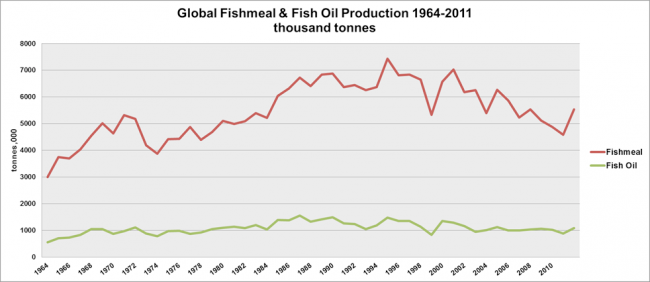
Meanwhile, this graph from WorldWatch based on FAO data shows a huge increase in aquaculture during that period:
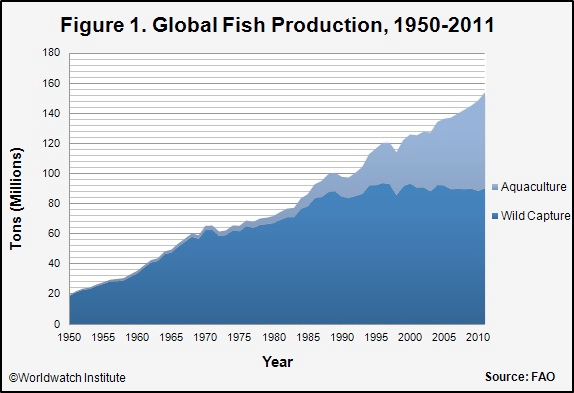
Since fish oil is fed to aquaculture (especially carnivorous fish like salmon), I believe this increase in aquaculture indicates an increase in demand for fish oil.
Fish oil prices seem to be increasing due to increasing demand and limited supply.
Here's another graph I found on fish oil prices from 2003 to 2014, showing a substantial price increase after 2011 relative to soybean oil:
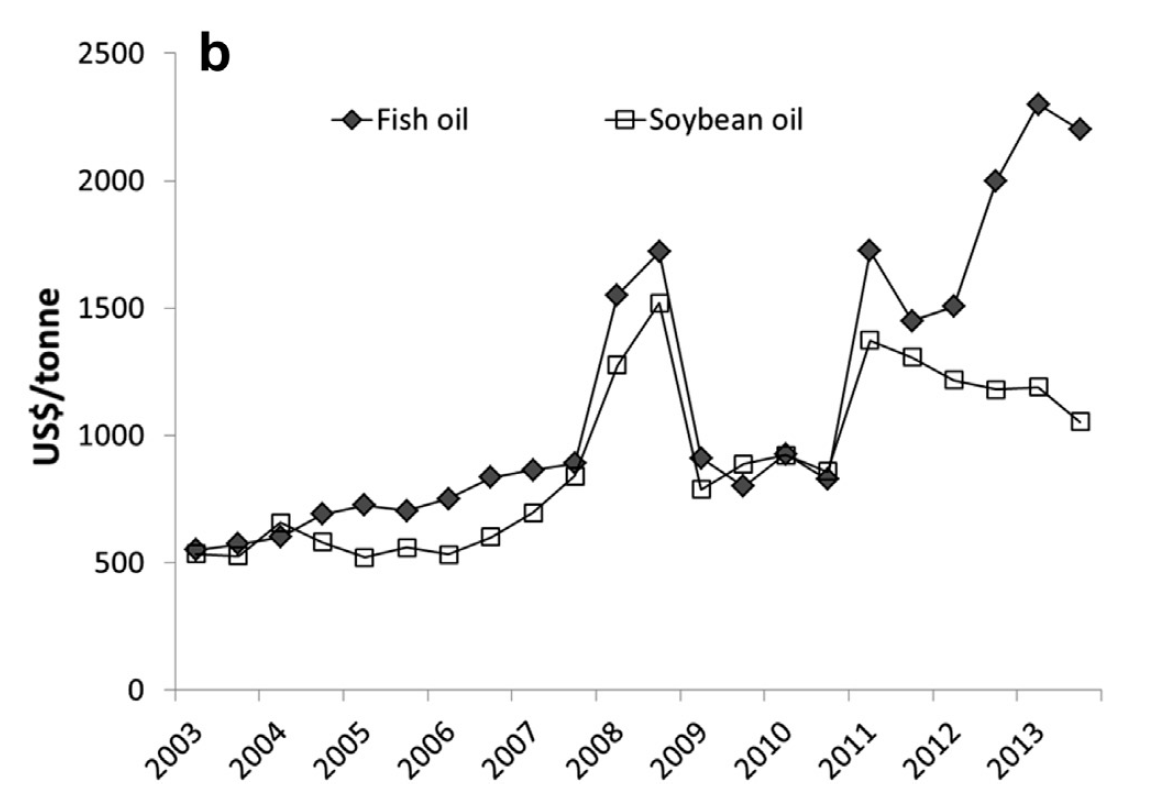
The FAO seems to think high prices are here to stay: "In general, the fishmeal and oil sector remains vulnerable due to its limited supply sources, with not much progress being made in this regard as demand continues to increase. Furthermore, according to IFFO, the global production of fishmeal is down by about 2.3 million tonnes compared with production in 2000. In both 2014 and 2015, the El Niño phenomenon significantly affected the actual catches, as well as the expectation of anchovy catches in Peru, which is by far the major fishmeal producer and has been for many years. With these impacts, prices have fluctuated over the past two years, but in the long-term, prices will not revert back to lower levels."
Before the rise of aquaculture, fishmeal and fish oil were used for low value purposes.
These diagrams from IFFO show that before the aquaculture industry became so large, fishmeal and fish oil were used for low value purposes such as pig feed, chicken feed, margarine, and industrial purposes.
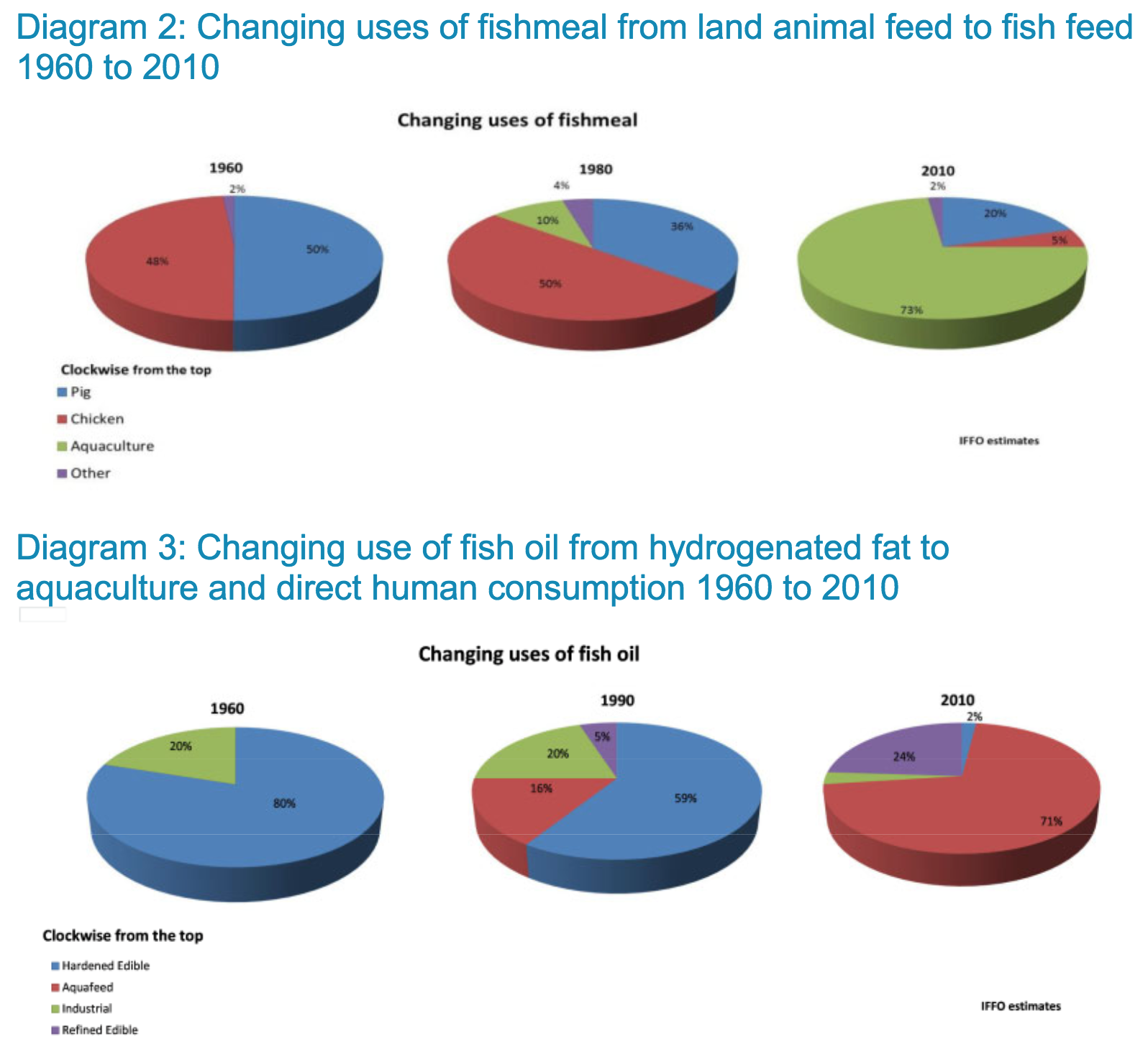
So even if demand from aquaculture were reduced or eliminated, we could still have comparable numbers of feed fish slaughtered and sold for these low value purposes.
The omega-3 fatty acids (EPA and DHA) in salmon may already be declining.
This study of farmed Scottish Atlantic salmon already shows a decline in EPA and DHA presumably because of a decrease in fish oil in their feed:
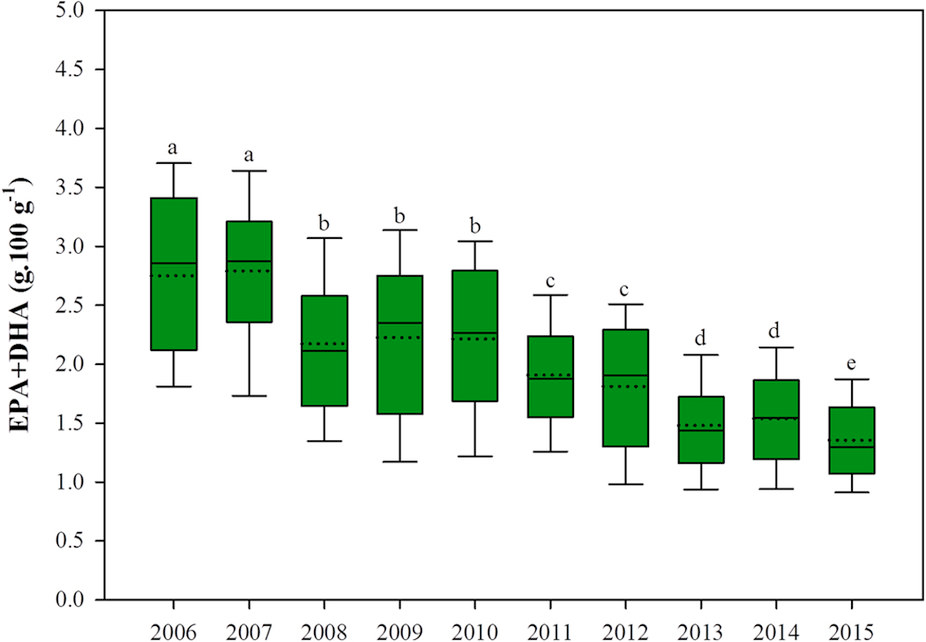
Microalgae and genetically modified plants could serve as alternatives.
This paper, under the section "Future sources of EPA and DHA," considers some alternatives to fish oil.
Microalgae oil containing EPA and DHA is available today and mostly used in human nutritional supplements, but is currently expensive to produce.
Genetically modified plants with genes from microalgae to produce EPA and DHA are currently being investigated and may be promising as alternatives. It seems though that genetically modified feed is not typically used in aquaculture and that introducing it could create consumer acceptance and regulatory problems.
The company Verlasso previously marketed salmon fed with genetically modified yeast containing omega-3s as sustainable. More recently, Verlasso has been using algae with omega-3s instead, perhaps to increase consumer acceptance.
Although there are potential benefits for animal welfare, there are some potential downsides. If the aquaculture industry finds suitable alternatives to fish oil, this may (a) reduce a constraint on aquaculture production and (b) permit one of the primary health benefits of fish (the EPA and DHA) to persist, increasing consumer demand for fish.
Some useful sources.
- NOAA has an informative FAQ on aquaculture feed.
- This presentation has lots of informative graphs on production and demand of fish oil and fishmeal.
- This IFFO paper has some useful information and graphs on production and demand of fish oil and fishmeal.
- Charity Entrepreneurship has an informative report on feed fish, mostly focusing on fishmeal.

Thank you for compiling information on fish oil used in fish feed. As part of the research at Charity Entrepreneurship, I recently published a report exploring fish feed optimization as a potential intervention. We had mostly focused on fishmeal, so you might be interested in complementary research. A lot of crucial considerations that we've explored are also applicable to fish oil. You can find the whole report here.
Thanks for the feedback! Yes, I agree that many of the considerations for fishmeal and fish oil are similar. I originally wrote this post a long time ago which is why I did not reference your report in it, but I've now included it under "Some useful sources."
A few comments on your report: